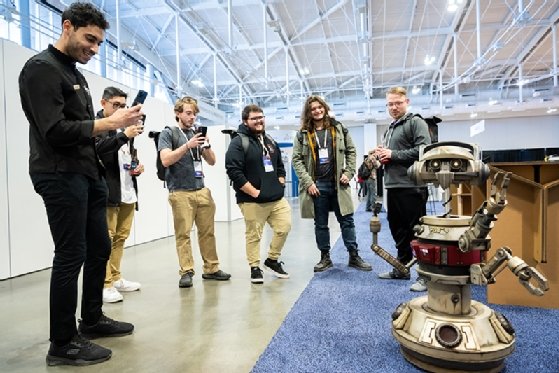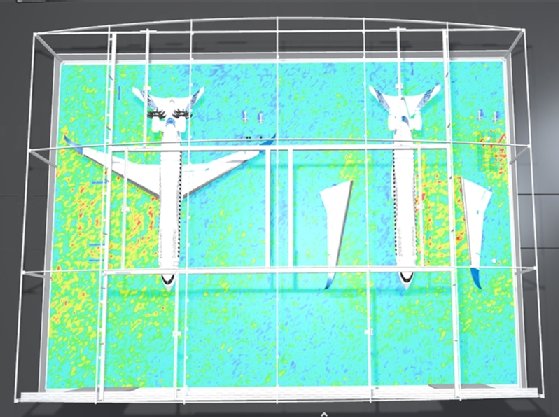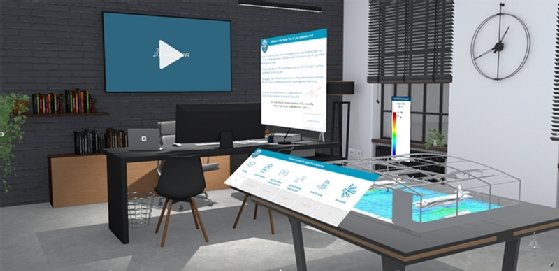
Chaosamran_Studio - stock.adobe.
The new shape of design in the age of Industry 4.0
The modern manufacturing process has evolved over the last decades to the point where there are many interconnected disciplines taking place, often at the same time. With the advent of advanced comms technologies, interconnections are taking on a whole new paradigm for engineering.
There are few industries like manufacturing when it comes to dealing with change. In fact, change is an absolute constant. Over the course of the lifetime of a product or service, everything in the cycle of conception to operation and maintenance will have changed to some degree, from a minor tweak to a major overhaul. That’s just how it goes.
The same is true for the fundamental design and manufacturing technologies used to create these products and services. They evolve and become more suited to meeting the changing demands of those companies creating and producing. Just the normal evolution of technology.
But what happens when the dynamics of change are not normal? Like dealing with a pandemic? Or as breakthroughs in communications technologies, such as 5G networks, open whole new vistas in terms of the possibilities of design and manufacturing, ushering in Industry 4.0? This is precisely what is being faced by design technology company SolidWorks.
Constant collaboration and communication
It may be instructive to drill deeper into this world of constant collaboration and communication. The modern manufacturing process has evolved to the point where there are many interconnected disciplines taking place, often at the same time.
Information availability is therefore absolutely mission-critical – each member of design and manufacturing teams needs to have access to the right product information at the right time. These team members can be anywhere in the world, involved in tasks as disparate as conceptual design; initial engineering design; prototyping, including the likes of wind tunnel analysis and increasingly computational fluid dynamics; design simulation and crash tests; procurement, supply and ordering; marketing; service and maintenance; and factory production.
Project success depends on constant collaboration and communication between the various people engaged in carrying out their individual activities, who may be located virtually anywhere in the world. Team members, manufacturers, suppliers and partners need to access the right type of data at the right stage in the process, meaning that all of these stages have to be completely interlinked.
This has been the fundamental model for the industry since the 1990s. What has changed in this time is that not only have the design and manufacturing tools become a lot more sophisticated, but the extent of networks they run on, and the knock-on effect this has had in terms of added capability for design teams, has increased commensurately. Moreover, the advance of 5G networks and their now standard use in design and manufacturing use cases has been hugely significant, especially over the course of the past three years.
Agility and resilience
Curiously, these past three years, which have seen all aspects of business changed by the Covid pandemic, have been bookended by the 3DExperience World event for the SolidWorks community. The 2023 event was the first “proper” one of its kind following the pandemic, which swept through major economies just weeks after 2020’s event, and exemplified not just changes and evolutions in the core systems that the company offered, but also highlighted just how the world of manufacturing and the world in general has changed.

Speaking to Computer Weekly, Gian Paolo Bassi, executive vice-president of 3DExperience Works at SolidWorks owner Dassault Systèmes, says, from the perspective of manufacturing, Covid has generated a next level of agility that all firms, especially smaller ones, require. And with more than just dealing with remote work to cope with.
“The culture was that you have access to the company’s intellectual property when you are in the safe environment of your office, and then all of a sudden, the rules are changed. Another thing that changed [in addition to] the pandemic was ransomware, so the level of cyber crime has increased exponentially in the last three years. All of this has completely changed the perspective of companies – and of the employer and CEOs,” he says.
“The priority is shifting from ‘give me the tools to quickly design and manufacture’ to ‘give me the tools to collaborate from anywhere and give me agility and resilience at the forefront’. And the biggest preoccupation is the tools to manage risk and the supply chain, to reconfigure a supply chain or even a production line quickly to optimise it, because the labour is scarce, and materials, and prices are unpredictable. And this is a big shift. That is even more important than the collaborative design, which I think we started achieving long ago.”
As distributed processes become more established – remote workers now have better access to more design and manufacturing tools because of the pandemic – a knock-on effect has been a huge increase in data, making product lifecycle management (PLM) more complicated. A key point raised at 3DExperience World by Bassi was that there could be too much concentration in creating massive structured datasets of product lifecycle information when the key need is that of increased agility.
“There are two data management environments – one is the system of record. You have the big, cumbersome, heavy data management programs that are difficult to use [and which are] impenetrable. To check something or share something, you have to ask for permission because it is the system of record,” he notes.

“If a new part shows up in a system of record all of a sudden, the pricing model can be changed all of a sudden [and then] the supply chain needs to be notified. That is something that needs to be done very carefully. Everything related to innovation has to be done in a more agile way. This is the biggest change in engineering collaboration – you need to have both a system of record structure and collaboration.
“The [other data management environment] is to have a structured collaboration without the burden of a system of record. [SolidWorks supports] an environment that is as simple and agile as using Facebook or Dropbox to share everything – with a difference that it is traceable. It is integrated, and it is an industry safe, which is a big, big difference, and it is all in the same place.”
Digital continuity
The framework of structured collaboration is designed to pair both crucial elements of the process, giving users anywhere in the production process secure access and traceability of any parts designed and added, with respect to what this means in supply chains and indicating whether these changes are not just physically possible, but also practical in terms of what it means financially to use certain new parts or materials. All consequences of new design options are now available.
“There needs to be digital continuity in creation, from a design structure to manufacturing, and even down to the level of deployment of products and following up customer support with access to technical data. All of this data has to be in the same place because if the systems are disconnected, the technical data for the support organisation is never ever up to date,” Bassi adds.
“[It’s the] same story for manufacturing. How do we keep the manufacturing [process] current on the bill of material in the latest variation of the configuration? Users need to have access to the same system at the same time without loss of connection. A single platform where everything – all the intellectual property, all ideas or designs or toolpath, all supply and information – is conducted and kept up to date and accessible to everyone. Simultaneous engineering was a [term] popular in the 1980s, but right now it is [all about] simultaneous product development.”
The concept is particularly important when considering that design and manufacturing firms are either already operating or planning for Industry 4.0, looking for solutions to the challenge of how it can promote the development of the global digital economy.
5G and Industry 4.0
At MWC Barcelona 2023, a report published by Huawei, together with EI Studios and GSMA Intelligence, outlined ways the industry can achieve these goals and how connectivity, computing and green ICT can vitalise the digital economy.
The Driving development: The impact of ICT investments on the digital economy study highlights the new trends in the global digital economy in the post-pandemic era, and made the bold conclusion that ICT infrastructure and the industry digitisation it enables are set to drive the fourth industrial revolution, similar to how steam power and mechanisation drove the first industrial revolution three centuries ago.
Moreover, it observes that 5G is a now an established major global trend, and intergenerational evolution increases economic benefits by 15%, predicting there will be 9.8 billion mobile connections in 2030, of which 5.3 billion will be 5G.
At MWC, Dassault Systèmes highlighted the work of its unit focused on connectivity in manufacturing. It specialises in showing manufacturing firms how to tap into the latest advances in communications so they can operate their manufacturing processes more efficiently, connecting with the internet of things (IoT) and building up a connected digital infrastructure.
For example, modelling a factory robot showing every asset contained within the working environment, with all of the required communications access points to plan for the coverage zones of the localised communications infrastructure. These could take the form of understanding the connected environment of, for example, a private 5G network and converting connectivity points to a 3D model containing all of the building enclosure and equipment contained within, but also using this model for asset monitoring and simulation. Through this, firms can know exactly how many antennae they need at their installations, and the performance of the antennae compared with what is typically found in the location to establish optimum coverage for the network to support optimum operations.
With such functionality, Dassault Systèmes believes what it is proposing is helping to empower users to adopt faster the appropriate private network for their business. What the firm is doing, remarks Stéphane Sireau, vice-president of high-tech industry at Dassault Systèmes, is addressing customers’ needs with connected systems.
“Think about 5G antenna. These are basically elements which integrate with complex systems to integrate electronics and mechanics, etc. And then the new element [with] which we are planning to offer a high-tech portfolio is what we call digital infrastructure, which is 5G mobile private networks and the datacentres, or in this case, mobile edge computing. So that’s really what we’re kind of trying to showcase,” he explains.
“What we see as being particularly interesting is that we have full footprint and remanufacturing well, then what we’re seeing is that a lot of companies are now saying, ‘Okay, we’ve got our assets connected to cables. What if we tear out those cables, just like in our homes?’ Increasingly, we think that once we can really unleash the mobile, wireless potential of factories, it’s going to bring a whole new era of innovation.
“But for this to happen, two things are required. First you need proper wireless coverage, and then you need the proper kind of low-latency network where you can power your automated guided vehicles (AGVs), and for that, have [low]-latency [communications]. You need to have your datacentres close by, close to the edge.”
Optimising the engineering workspace
In an example of this capability, both in terms of 3D modelling and communications, Dassault Systèmes offers a virtual reality (VR) experience demonstration in which it takes an immersive view of an aircraft hangar, where engineers can put themselves right at the heart of operations and see clearly how well they are optimising the working space, assessing options around them depending on how they organise comms coverage within the working environment.

They can also view the wider system of a factory as a whole, with not just the mobile coverage, but also the datacentre that system was designed to use, and potentially the energy supply chain of factory premises.
For Sireau, the whole premise on which Dassault Systèmes is built is that through virtual twin experiences, manufacturing firms can model things virtually, then put them to practice in the real world, and then from the real world back to the virtual, offering continuous feedback. From that perspective, he stresses, the network is going to become more and more important.
“It’s going to be the essential part of what connects every asset: you cannot talk about a fully automated factory with AGVs and robots [without mobile connectivity]. A lot of companies [come to Dassault Systèmes] and they talk about network as a mess... But then the virtual twin of the network is actually an asset itself. Getting that virtual twin of your network right is going to become more and more complex as the network becomes more and more critical.”

As a final point, Dassault Systèmes also believes there is a fundamental difference between the connected, immersive worlds of engineering it creates and the metaverse. For Gian Paolo Bassi, the metaverse seems about “creating a bubble where people get stuck in a visceral way in an alternative universe. We don’t want that. We want people to use virtual reality to do real things and connect better to life, and this is where our focus is – [to] create better products you can better serve in real life. To waste less, consume less, spend less energy to create what we need, and make sure that is what we need.”
In short, an all-connected blueprint of the future, meeting the changing demands of those companies creating, designing, manufacturing and operating. That is the evolution.
Read more about Industry 4.0
- Flex muscles up 5G SA private wireless, Industry 4.0 in advanced manufacturing: Leading comms tech provider teams with multinational electronics company to combine 5G SA private wireless and Industry 4.0 expertise for advanced manufacturing services in Brazil.
- Nokia bolsters mission-critical industrial edge capabilities: Comms tech provider bolsters MX Industrial Edge to support the increasing processing needs of Industry 4.0, and unlock future business-critical AI and machine learning OT use cases.
- WBA sets out how Wi-Fi 6/6E enables Industry 4.0: Report highlights next-gen wireless use cases, including detailed autonomous mobile robots, automatic guided vehicles, augmented and virtual reality, and posts IIoT deployment guidelines.








